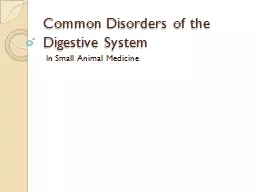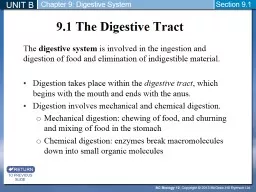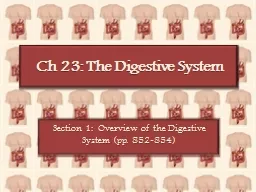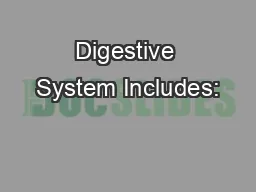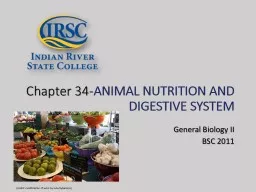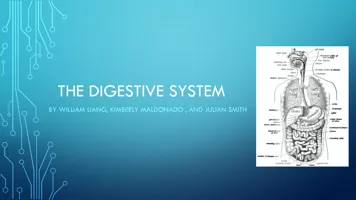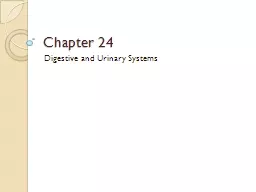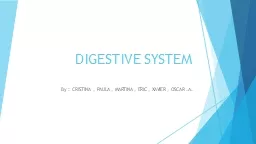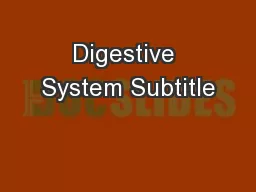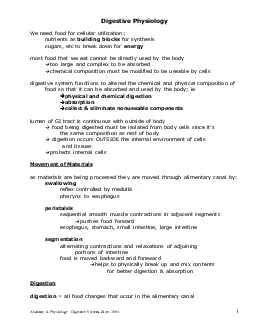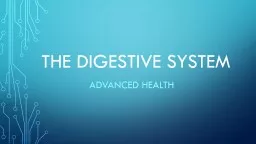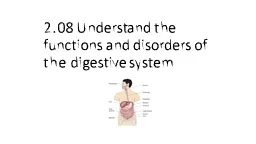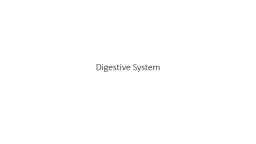PPT-Common Disorders of the Digestive System
Author : olivia-moreira | Published Date : 2015-10-28
In Small Animal Medicine Most Common Disorders Bloat and Gastric Dilation Volvulus GDV Pancreatitis Colitis Food Allergies Foreign Body Inflammatory Bowel Disease
Presentation Embed Code
Download Presentation
Download Presentation The PPT/PDF document "Common Disorders of the Digestive System" is the property of its rightful owner. Permission is granted to download and print the materials on this website for personal, non-commercial use only, and to display it on your personal computer provided you do not modify the materials and that you retain all copyright notices contained in the materials. By downloading content from our website, you accept the terms of this agreement.
Common Disorders of the Digestive System: Transcript
Download Rules Of Document
"Common Disorders of the Digestive System"The content belongs to its owner. You may download and print it for personal use, without modification, and keep all copyright notices. By downloading, you agree to these terms.
Related Documents

